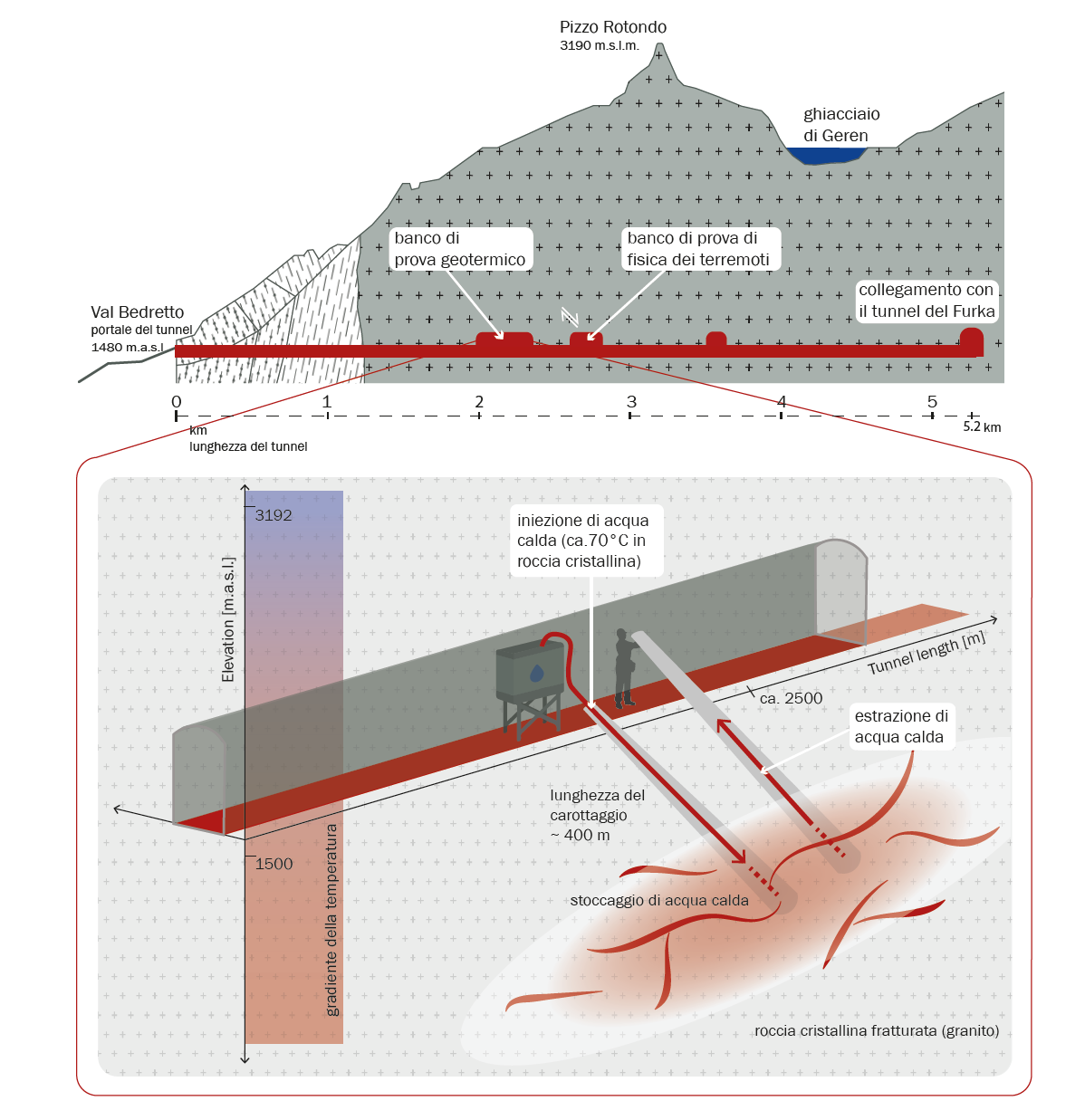2025-06-04
New experiment on heat storage in rock launched

The BEACH (Bedretto Energy Storage and Circulation of Geothermal Energy) pilot and demonstration project is investigating the feasibility of heat storage in crystalline bedrock, i.e. granite, for the first time. An initial injection test lasting several days began this week..
The concept being investigated in BEACH is already established in sedimentary rocks and commercially available. Larger buildings, such as the German Bundestag building, use such underground storage facilities for heating in winter. By combining several boreholes, the system can also be used for cooling in summer. The predominant bedrock in Switzerland, which makes up about 60% of the country's surface area, consists of crystalline rock. Unlike sedimentary rock, it lacks the pore space that provides the storage effect. However, the opportunity offered by crystalline rock lies in the fine fissures that could be used to store water and heat.
Such a process has not yet been tested in this type of rock. In preparation, researchers have already created numerical models based on data collected in previous experiments at the BedrettoLab on rock volume. In the now running test, water is being injected into the borehole to heat it in the surrounding rock. Initially, the water will remain in the rock for only a few days, but in further experiments within the BEACH project, it will be left for longer periods, and warm water will also be injected to test heat storage.
Storing heat in rock
In a real-life project, excess heat in summer, e.g. from solar energy, would be used to heat water, which would then be stored in deep rock. Depths of around 1.5 km are planned, where the average temperature is around 60 °C. Depending on the flow velocity underground, the location of a second borehole will be determined in order to bring the warm water back to the earth's surface for use.
The BedrettoLab comes close to these real conditions, as the geothermal laboratory is covered by about one kilometre of rock and the rock has a suitable fracture system. ‘We are exploiting existing fractures and the fluids circulating in them and enriching the existing fracture structures with more water,’ explains project manager Maren Brehme. Many important parameters are already known from the rock volume in the BedrettoLab. For example, it is to be expected that a certain amount of water will flow away and not follow the main flow direction exclusively. However, it is important for the feasibility of the project to find out whether at least a large part of the injected water volume can be extracted again.
In addition to the ongoing test in the BedrettoLab, the BEACH project team is already in talks with an industrial company in Schaffhausen that has expressed interest in working with the BEACH researchers to implement the concept tested in the BedrettoLab in a pilot plant.
To learn more about BEACH, you can watch the following TV report (in German): 10vor10 (SRF) from August 2, 2024

